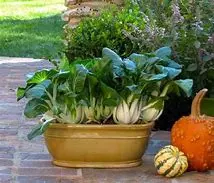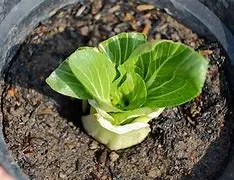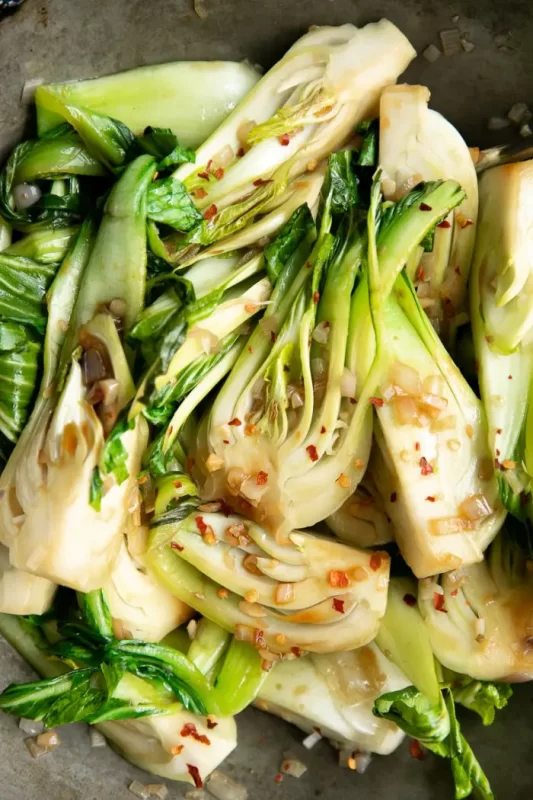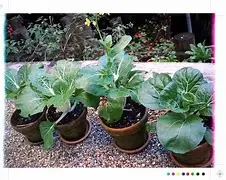Growing Badass Bokchoy in Beautiful Containers

Growing bokchoy or, pok choi as it is know in Asia, is easy if you know the Ph level, correct water amount, how to control diseases and pests, plus the correct time to harvest. We dig through the data to give you the best information in this post about growing badass bokchoy.
Best soil for Bokchoy
Bokchoy likes the soil to be slightly acidic between 6.5-7.0 Ph (link to guide on Ph levels). These plants are native to China and prefer rich, well-worked soil. They enjoy full sun but can grow in partial shade. It is best to use succession planting, when you plant seedlings every few weeks, so you have an ongoing harvest of baby plants to harvest. The plant tends to get tough and stringy and a little bitter, as it matures. High in fiber, vitamin C, vitamin K, vitamin A, and beta-carotene, this popular green is also an excellent source of folate, calcium, and vitamin B6. It is both a cruciferous vegetable and a leafy green vegetable.
Direct seed or transplant
Growing bokchoy from seed is usually done indoors about 4 weeks before the last frost. Or, you can direct seed into a container outdoors when all danger of frost has passed. If you do have a cold-front move in, cover the young plants with bubble wrap.
When you start seeds indoors, you can transplant into a container as soon as the weather warms up. Plant where the seedlings can get 3-5 hours of full sun per day.
How to plant and care for growing bokchoy
Bokchoy seeds should be planted 1/2″ apart 1/4″ in depth. Seedlings should be 6″ to 12″ inches apart. In a 12″ container, place 2 to 3 plants in a pot, for growing bokchoy in your patio garden. If you want a continuous harvest, plant several containers, about a week or two apart. The soil for growing bokchoy should be well-draining, and compost rich. You should use an organic fertilizer during planting with heavy amounts of compost added too, but do not use chemical fertilizers during its growing stage. Keep the soil moist with weekly watering but do not get the leaves wet, this can cause disease. The best way to water is at the base of the stem.
Diseases and pests of growing bokchoy
Flea beetles love to eat bokchoy and will leave little holes in the leaves. The best preventative is to cover the plant with a cloth. You can also spray young plants with vinegar or neem oil. Cabbage worms also like bokchoy so a horticultural spray or neem oil will get rid of the young moths.
Companion plants of growing bokchoy
Planting celery or thyme near bokchoy will get rid of cabbage worms. Growing bokchoy may have a better flavor if it is planted near chamomile, mint, or garlic.
Harvesting Bokchoy

After germination, bokchoy is ready to harvest in approximately 46-60 days. Harvest leaves from the outer part of the plant to let the inner leaves continue to grow. When you have harvested just about all of the leaves, cut off the leaves about 1″ above soil level and the plant should re-sprout into a new plant. If you thin out your garden, you can toss the seedlings into salads as tender shoots. Bokchoy is best when it is young when you can eat the entire plant, if you want to cut it earlym but leave enough of the plant stem to re-grow.
A Great Recipe is 10-minute Garlic Bokchoy

My favorite way to eat bokchoy is 10 minute garlic bokchoy. I usually have this with a piece of grilled or baked chicken with a little rice.
Ingredients in this Garlic Bok Choy Recipe
- oil
- garlic
- shallots
- baby bok choy
- soy sauce
- sesame oil
- crushed red pepper (optional)
- Add the red pepper at the table if you want a milder dish. This carmelized bokchoy has a sweet nutty flavor.
How to cook bok choy
- Halve or quarter each stalk (depending on the size of the bokchoy) and wash under cold running water.
- Heat a large skillet or wok over medium-high heat and add the oil. Swirl to coat the entire surface of the pan. As soon as the oil is hot, add the garlic and the shallots, Sautè for 1-2 minutes, stirring continuously.
- Add the bokchoy, soy sauce, and sesame oil. Toss and cover. Cook for approximately 2 minutes before uncovering, tossing, and covering. Continue to cook the bok choy until white parts are carmelized but still slightly firm. The tops will be wilted.
- Sprinkle with crushed red pepper, if using, and drizzle with additional sesame oil, if desired.
Conclusion
Growing bokchoy is easy if you know what the plant prefers. We plant ours in beautiful containers so we have a continuous supply of this healthy green vegetable. Have you eaten bokchoy? Leave a comment below, please!
